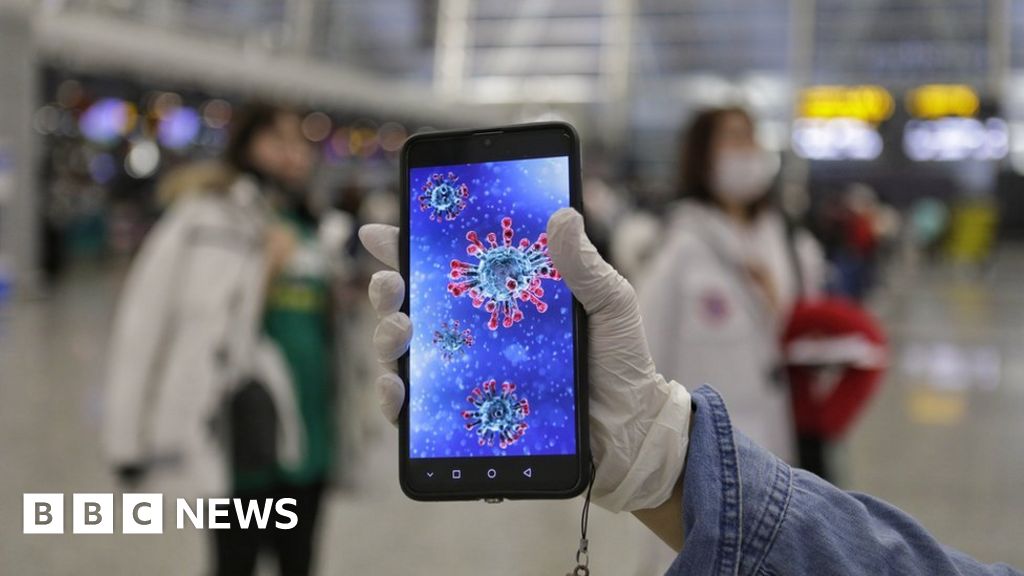D
Donkey
Guest

China coronavirus: Misinformation spreads online about origin and scale
The outbreak of the new coronavirus has led to the spread of misleading videos and conspiracy theories online
For the record

First off, what makes you think they are carriers and not people who aren’t infected and didn’t want to get infected? In other words, what percentage of the 5 million who fled Wuhan were you estimating had contracted the illness without symptoms? It is reasonable to believe some were carriers, but not really reasonable to believe that they all were.I saw on tv where some five million residents have left Wuhan for other parts of China or the world. I doubt there have been so many carriers as that represents in the history of the world except perhaps for the Black Death. Imagine how many exposures would result from even a half million scattering out from the epicenter.
There is in Japan, Vietnam and Germany though.There are not yet any cases of person-to-person spread taking place within the United States.
Yes, and if it hasn’t happened yet it is pretty much inevitable, because a lot of people who are infected feel mild or even no symptoms.There is in Japan, Vietnam and Germany though.
Yes it has happened in several countries, it will continue to happen. So we know this can happen.Yes, and if it hasn’t happened yet it is pretty much inevitable, because a lot of people who are infected feel mild or even no symptoms.
The same is true for influenza, though. It is an annual killer that we take too much for granted. We don’t know that 2019-nCoV is here (in the community). We know that influenza and pneumonia and other serious diseases are here, though.Yes it has happened in several countries, it will continue to happen. So we know this can happen.
I think by the end of this week the real potential of this virus will become obvious.
The thing with this virus is it is contagious in the incubation stage, a person is quite well and can still share his or her corona virus around, showing no symptoms wont help the cause in this case.

That is the real issue I think, several countries are starting to voice possible pandemic. Australia is evacuating its people from Wuhan and putting them on an island off the mainland for quarantine. That hit the news along with the Melbourne, Australia, reproduction of the virus.You’re right about this, too: from what I gather, 2019-nCoV has spread as far in about a month as SARS spread in more like 5 months. It looks like a fast mover.
So there you have it, SARS from years before was also a Coronavirus.Coronaviruses are a group of viruses that cause diseases in mammals and birds. In humans, the virus causes respiratory infections which are typically mild including the common cold but rarer forms like SARS and MERS can be lethal. In cows and pigs they may cause diarrhea, while in chickens it can cause an upper respiratory disease. There are no vaccines or antiviral drugs that are approved for prevention or treatment.
Coronaviruses are viruses in the subfamily Orthocoronavirinae in the family Coronaviridae , in the order Nidovirales.[4][5] Coronaviruses are enveloped viruses with a positive-sense single-stranded RNA genome and with a nucleocapsid of helical symmetry. The genomic size of coronaviruses ranges from approximately 26 to 32 kilobases, the largest for an RNA virus.
The name “coronavirus” is derived from the Latin corona , meaning crown or halo , which refers to the characteristic appearance of the virus particles (virions): they have a fringe reminiscent of a royal crown or of the solar corona.
People think taking these precautions means you’re a germophobe. No!This is the advice from the CDC on preventing illness by forming good handwashing habits:
Keeping Hands Clean | Handwashing | Hygiene | Healthy Water | CDC
- Before, during, and after preparing food
- Before eating food
- Before and after caring for someone at home who is sick with vomiting or diarrhea
- Before and after treating a cut or wound
- After using the toilet
- After changing diapers or cleaning up a child who has used the toilet
- After blowing your nose, coughing, or sneezing
- After touching an animal, animal feed, or animal waste
- After handling pet food or pet treats
- After touching garbage
After loading washing machine with laundryYes, if you blow your nose, cough or sneeze at Mass, you ought to excuse yourself and go wash before you touch anything.
- Before, during, and after preparing food
- Before eating food
- Before and after caring for someone at home who is sick with vomiting or diarrhea
- Before and after treating a cut or wound
- After using the toilet
- After changing diapers or cleaning up a child who has used the toilet
- After blowing your nose, coughing, or sneezing
- After touching an animal, animal feed, or animal waste
- After handling pet food or pet treats
- After touching garbage

I have no idea. However, it’s reasonable to believe, as you say, that some are carriers. I recall reading that people fleeing the Black Death in the Middle Ages were one of the big reasons it spread so widely and so rapidly.First off, what makes you think they are carriers and not people who aren’t infected and didn’t want to get infected? In other words, what percentage of the 5 million who fled Wuhan were you estimating had contracted the illness without symptoms?
Not that I am agreeing or disagreeing with you, but upon reading that I instantly think of “Typhoid Mary.”I have no idea. However, it’s reasonable to believe, as you say, that some are carriers.

